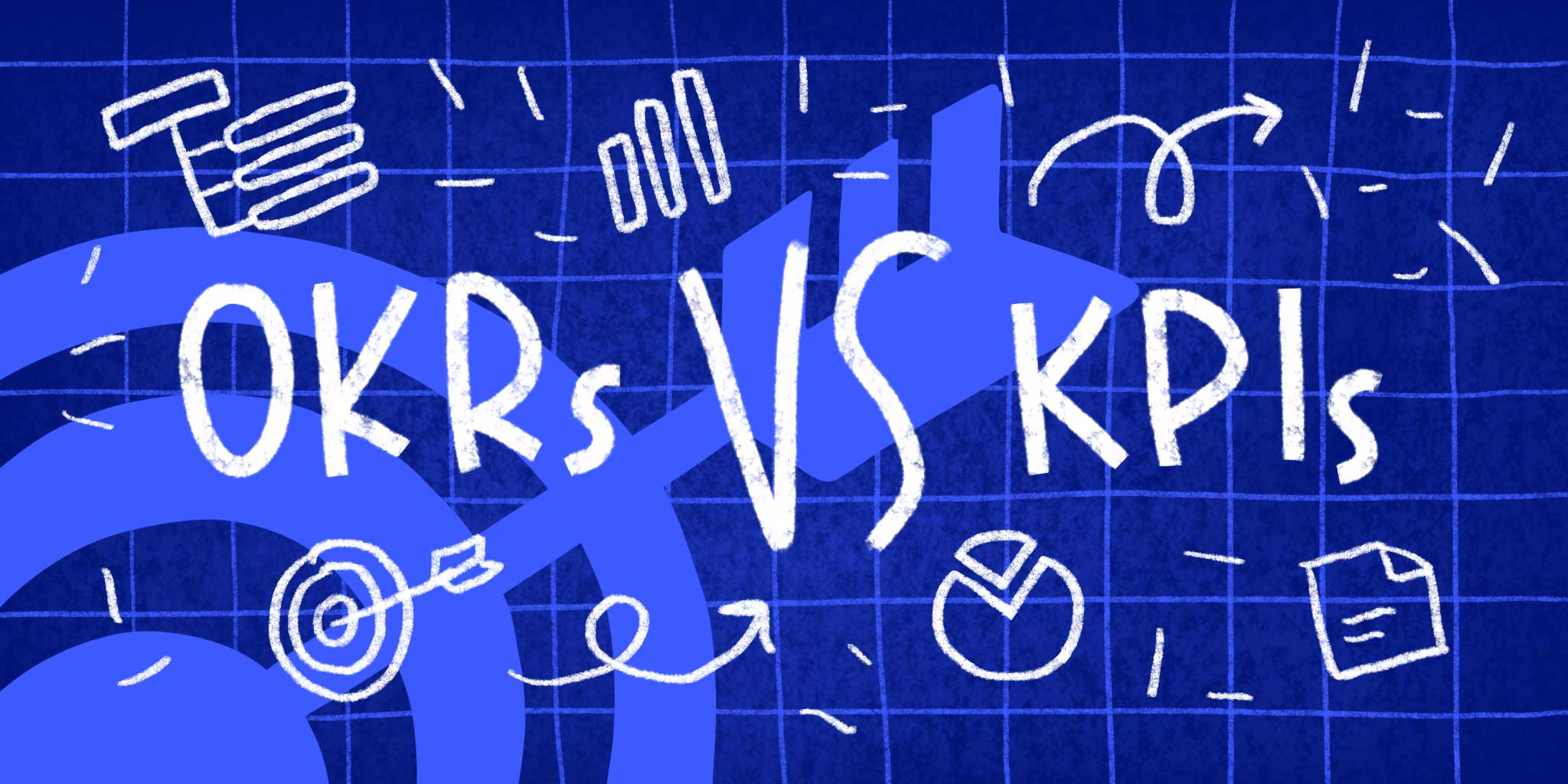If your employees express confusion about the difference between OKRs vs. KPIs, they’re not alone. Many people don’t understand the difference between the two, let alone how OKRs and KPIs work together.
The simplest way to distinguish OKRs vs. KPIs: OKRs are used to reach objectives, while KPIs measure employee, departmental and organizational performance.
SEE ALSO: The HR Innovator’s Guide to OKRs
OKRs
OKR stands for Objective and Key Results, and it’s used to set and achieve specific goals.
OKRs are set for a defined time period, usually a business quarter, and include a specific objective accompanied by two to five smaller key results. The objective details a desired destination, while key results show how the objective will be achieved. OKRs must be measurable and attainable, but they are often more aspirational in nature.
Think of an OKR as a road trip, with the objective as the destination and the key results as your GPS. Ask yourself three questions:
- Where do you need to go?
- How will you know when you get there?
- What will you do when you reach your destination?
The first question — where you need to go — should provide a clear objective for the OKR. Examples of possible OKR objectives include:
- Grow new business revenue by 50 percent
- Improve customer experience scores by 20 percent
- Select 25 new franchise candidates by the end of the quarter
- Train 15 new salespeople
- Increase manufacturing productivity by 30 percent
Once you determine your objective, you need to develop your key results. An OKR’s key results are highly specific and outline how you’ll know you have reached your objective. Depending on the scope of your objective, you may have a single key result or multiple. Examples include:
- Close $150,000 worth of new sales
- Increase Net Promoter Scores from 55 to 66
- Select 60 interview candidates
- Provide trainees with three training sessions by June
- Reduce equipment downtime by 20 percent through predictive maintenance
Most OKRs have more than one key result. For instance, if your objective is to select 25 new franchise candidates, your key results might include:
- Collect 500 resumes from potential franchise partners by April
- Select 60 candidates for interviews by June
- Offer franchise opportunities to 25 interviewees by August
Once you achieve your key results, you need to consider future initiatives. What steps will you take now that you’ve achieved your OKR objective? Initiatives form the basis for your next set of OKRs. If you didn’t meet your objective, determine how close you came to meeting your objective and build new OKRs based on your progress.
KPIs: Key Performance Indicators
Unlike OKRs, KPIs (Key Performance Indicators) do not further the completion of a task or objective. Instead, KPIs measure the success of ongoing processes and activities.
Sometimes called health metrics, KPIs vary within industries and even within individual companies. The KPIs for, say, accounting, will be very different from those used to evaluate IT processes. Common examples include KPI measurements of:
- Average reply time
- Count
- Customer lifetime value
- Customer service call completion rates
- Downtime
- Production rates
- Sales revenue
- SEO traffic
- Social media shares
- Takt time
- Tickets per month
- Trial-to-customer conversion rate
- Visitor-to-signup conversion rates
- Web traffic
OKRs vs. KPIs
So how do OKRs and KPIs differ?
OKRs are often used to help companies break out of the norm and grow into new territory. OKRs are often for the inspiring goals that often take company-wide involvement. A KPI measures the success, quality, quantity or output of an ongoing process.
More often than not, KPI goals are attainable and represent the output of a process or project already in place. On the other hand, OKR goals tend to be more aggressive and ambitious — without being unreachable.
How KPIs and OKRs Work Together
KPIs and OKRs work well together. If a KPI result indicates a need for improvement, it may become the “key result” of a new or existing OKR. For instance, if KPI results indicate sales are flagging, a company might develop an ambitious OKR focused on improving overall profits, marketing, or customer service, all of which could include key results based on meeting the existing KPI. Similarly, meeting an OKR objective may indicate a need to develop new KPIs to measure the company’s new reality.
Effective use of both OKRs and KPIs requires consistent communication between managers and employees to share feedback, discuss progress, and identify potential challenges and opportunities. When used correctly, both KPIs and OKRs are influential tools for goal management.
SEE ALSO: The HR Innovator’s Guide to SMART Goals
